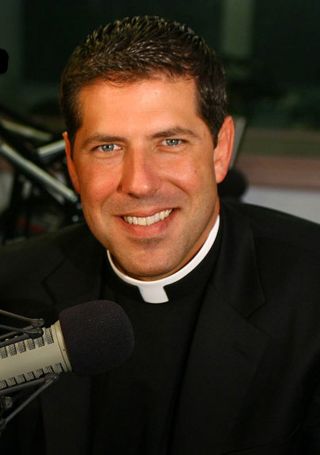 Of course all humans have an impulse to justify their sinful actions. It requires grace and humility to not try to justify them and to acknowledge their sinfulness.
Of course all humans have an impulse to justify their sinful actions. It requires grace and humility to not try to justify them and to acknowledge their sinfulness.
That makes this kind of a dog-bites-man story, but it’s a dog-bites-man story that’s going to be getting a considerable amount of attention in the next few weeks, so we may as well deal with it in advance.
The basics of the story are this: Fr. Albert Cutié (a.k.a., “Padre Alberto,” a.k.a. “Father ‘Oprah’” due to his radio and television appearances), formerly of the Archdiocese of Miami, has now written a book titled, Dilemma: A Priest’s Struggle With Faith and Love, in which he justifies his actions in connection with the scandal that began in May 2009. That scandal has not ended, however. In fact, as we will see, the book continues and has the potential to amplify the scandal—taking “scandal” in its historical and theological sense, meaning that more people may be led into sin as a result of this book.
The scandal originally erupted, as summarized by Time magazine, when:
The Mexican celebrity magazine TVnotas recently published 25 paparazzi photos of the Rev. Alberto Cutié, the popular Miami Beach priest famous for his Spanish-language television and radio talk shows, cavorting amorously on a Florida beach with an attractive woman. Over a three-day period, the pictures also captured him kissing her in a bar. In one of TVnotas’s “in fraganti” [“caught red-handed” in Mexican Spanish idiom] shots, the woman wraps her legs around Cutié; in another, Cutié has a hand down her swimsuit, fondling her rear end.
So the photos were fairly unambiguous. There wasn’t the potential for an “It wasn’t what it looks like” defense.
Subsequently, according to Wikipedia,
On May 5, 2009, Cutié asked church officials for a time of reflection and a leave of absence from his media programs and pastoral work as a result of the publication of pictures in which Cutié was shown kissing Ruhama Buni Canellis (born March 7, 1974, Guatemala). Cutié asked the Archdiocese of Miami for some time to think and make a decision on where his life was heading.
On May 11, 2009, Cutié was interviewed by Maggie Rodriguez of CBS’ “The Early Show”. He said that he was thinking about leaving the Roman Catholic Church for a woman he loves. He said that he respected the church’s position that priests be celibate and recognized that some are very dedicated to that calling. He stated he did not want to become the “anti-celibacy priest”.
On May 13, 2009, Cutié was interviewed by Teresa Rodríguez on the Univision show Aqui y Ahora. Cutie said: “I do regret if my actions hurt people with all my heart”, adding “[t]here are other ways to serve God. I am not the same man I was when I entered the seminary 22 years ago.” By the end of month Cutié announced that he had been in the process of discerning entering The Episcopal Church for the last couple of years, which in turn helped him consolidate marriage and his calling to serve God.
Fr. Cutie (I’m not going to make the acute accent over the final letter of his name each time I type it because my keyboard is not set up that way; I’m not punning on his last name) then defected from the Catholic Church, entered the Episcopal Church, became an Episcopalian priest, and somewhere along the line civilly married his paramour and fathered a child.
Now he’s written a self-justifying book to stir the matter up again. If the press release already sent out for the book is reflective of its content, it appears that he may well have changed his mind about respecting the Church’s position on celibacy in the Latin rite, that he does want to “become the ‘anti-celibacy priest,’” and that he may not be so concerned about his actions hurting others anymore.
We’ll get to the press release in the next post in this series, but first let’s talk about a few things needed to understand this situation—the kind of things that your friends may ask you about around the Internet water cooler once the book is released on January 4th.
First, let’s be clear about what celibacy is: It’s the property of not being married. Anyone who is not married is, by definition, celibate. People often confuse this with two other concepts—continence (which in a sexual context means not having sex) and chastity (which means behaving in an appropriate manner sexually, based on your state of life). If a person is celibate (unmarried) and they wish to be chaste (act in a moral manner, sexually) then they will be continent (not have sex), because sex outside of marriage is immoral. By contrast, if you are not celibate (i.e., you are married) then you can be chaste (act in a sexually moral manner) even though you presumably are not continent (i.e., are having sex).
Second, the requirement of celibacy is neither a “doctrine” (teaching) nor a “dogma” (infallibly proclaimed teaching taught or implied by Christ and the apostles) of the Catholic Church. It is a “discipline,” a practice that has been adopted for prudential reasons but that can, and does, admit of exceptions, thus . . .
Third, while the requirement of celibacy applies to most priests in the Latin Church, and while the Latin Church is the largest church within the overall Catholic Church, there are other Catholic churches in full communion with the pope (e.g., the Maronite Church, the Malabar Church, the Chaldean Church, the Melkite Church). In many of these Eastern Catholic churches married (non-celibate) men can be ordained to the priesthood.
Fourth, even in the Latin Church exceptions are made to the celibacy requirement for some priests—i.e., those who have been married ministers in other Christian communities and who then become Catholic and desire to pursue a vocation as a Catholic priest. This is most common in the case of Anglican and Episcopalian married priests who become Catholic, though it can also happen with other non-Catholic ministers who become Catholic.
Fifth, because priestly celibacy is a discipline rather than a doctrine or a dogma, it is something that the Church can adjust for prudent pastoral reasons, as in the case of the previous two points. It is thus theoretically possible that the Church might one day radically restructure or even end the requirement of priestly celibacy in the Latin Church.
Sixth, a Catholic can hold the opinion that it would be pastorally prudent to make such a change. You are not being disloyal or a bad Catholic by holding such a view. In fact, Pope Benedict encouraged discussion of this point at the very first Synod of Bishops he presided over as pope, the 2005 Synod on the Eucharist.
Seventh, don’t expect a dramatic change on this point any time soon, however. After the discussion at the 2005 Synod, the bishops ended up recommending that a change in the Latin Church’s discipline on this point should not now be pursued. And while Pope Benedict has seen the issue as something that can be legitimately discussed, he does not seem likely to make any sudden, dramatic change in the Church’s practice. That is because . . .
Eighth, there are good reasons for the Latin Church’s discipline on this point. To deal with the immediate practical aspect first, a sudden, dramatic change would cause massive pastoral problems throughout the Catholic world (precisely because the Latin Church is so big compared to the other Catholic churches). It would rival, if not dwarf, the chaos that followed the Second Vatican Council. There would be massive and unprecedented pastoral, financial, and legal difficulties, complicated by the fact that each country has different laws regarding issues like marriage, inheritance, and employment.
There would also be a tremendous amount of confusion among faithful and clergy alike, with the possible loss of faith on the part of literally millions of faithful and clergy as well—for not everyone understands the issue in the factually precise terms we have been discussing it.
I could write a whole blog post (actually, much more) on the problems that would result from a sudden, massive change of policy on this point, without the proper preparation being done first. Suffice it to say that it would be pastorally inadvisable in the extreme for the Church to make a sudden, unprepared shift in its discipline on this point. Translating the Mass into the vernacular would be peanuts compared to this. Thus, even if one felt that the Church should move toward such a solution in the long-term, that does not in the least mean that it should be done precipitously. Or at all, because . . .
Ninth, apart from the considerations of how such a shift could be handled, there are good reasons for the policy itself. One such reason is practical: celibate clergy simple are able to devote themselves fully to ministry in a way that married clergy are not. By divine law, married persons must devote quite substantial energies to their spouses and children, and it is gravely sinful not to do so. The problems of balancing the duties of ministry with the duties of family are well known and amply documented in the numerous books published each year by Protestant publishers on the subject of how to balance these duties if you are a pastor, a pastor’s wife, or even a pastor’s kid. Lots of marriages, parent-child relationships, and pastor-church member relationships have suffered grave harm by not getting these balances right. How to avoid such tragedies is a subject of constant discussion in Protestant clerical circles, as I can testify from my observations in the days when I was a Protestant preparing for ministry. But the practical considerations (either immediate or long-term) of a change regarding celibacy do not exhaust the question, for as Pope Benedict has pointed out . . .
Tenth, there is a supernatural dimension to all of this. Clerical celibacy is not simply a matter of making ministers able to fully devote themselves to ministry (though it does enable that to happen). The fact is that we will all—all of us who end up in heaven—one day be celibate. As Our Lord told us:
At the resurrection people will neither marry nor be given in marriage; they will be like the angels in heaven (Matthew 22:30).
This is one way in which we will be conformed to the likeness of Christ, for he himself was unmarried (which is why the Church is depicted in Scripture as his mystical bride; there was no literal “Mrs. Jesus” of flesh and blood).
By participating in celibacy early so that they may serve Christ’s Church, priests conform themselves in a special way both to the way we will all exist in the age to come and to the model left for them by Christ, who served his Church to the point of shedding his own blood for it. Furthermore . . .
Eleventh, celibacy for the sake of the kingdom of God is recommended in Scripture itself. St. Paul pointedly practiced celibacy for the sake of the kingdom (see 1 Corinthians 7-9) and appears to recommend the same to St. Timothy (2 Timothy 2), though this is less clear. From Paul’s example alone we know that clerical celibacy was practiced in the first century by at least some of Christ’s ministers. But what’s more . . .
Twelfth, it was both practiced and recommended by Christ himself. Not only did he refrain from marriage and live a life in service to the Church that he was bringing into existence (which is why the Church is depicted as his bride in Scripture; had there been a flesh-and-blood “Mrs. Jesus” living just down the street, such a metaphor would never have arisen), Jesus also specifically recommended celibacy. He acknowledged that this was not a gift given to everyone, but he urged that—for those to whom it was given—they should accept it. When he stated that divorcing one wife and marrying another amounted to adultery, his disciples, said,
The disciples said to him, “If such is the case of a man with his wife, it is not expedient to marry.”
But he said to them, “Not all men can receive this saying, but only those to whom it is given. For there are eunuchs who have been so from birth, and there are eunuchs who have been made eunuchs by men, and there are eunuchs who have made themselves eunuchs for the sake of the kingdom of heaven. He who is able to receive this, let him receive it” [Matthew 19:10-12].
Literally speaking, a eunuch is a person who has been castrated so that he cannot have sex. They were sometimes used as harem-guards in the ancient Middle East. Here Jesus uses this image in a striking but somewhat metaphorical way, referring to those who (literally) from birth have been incapable of sex (those suffering from certain birth defects), those who (literally) were made eunuchs in ancient cultures, and those who (metaphorically) renounced sex “for the sake of the kingdom” of God.
One such individual was Jesus himself, who refrained from marriage “for the sake of the kingdom” both because it is the final state in which we will all exist in the kingdom of God and to serve his Church, by devoting himself fully to ministry, to the point of pouring out his blood on the Cross for his mystical bride, the Church.
In view of the example and words of Our Lord, no one should lightly dismiss the practice of clerical celibacy. One may question how this principle should be applied in different ages of the Church, but it is not a thing to be treated in a scornful or dismissive manner.
So what about Fr. Cutie?
We’ll get more into his situation in the next post.
For now . . . what do you think?
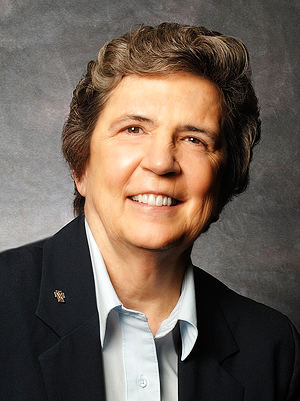
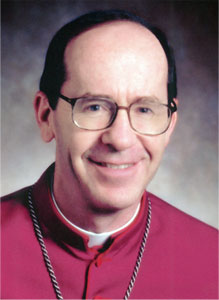

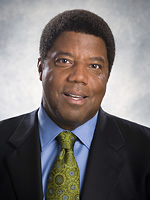
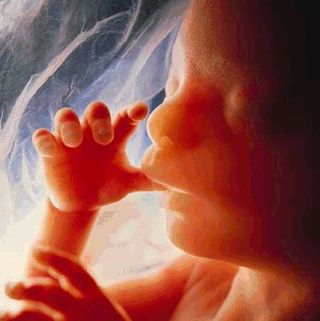

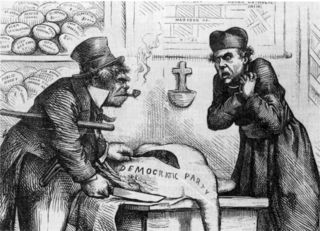
 Al Gore Lied, James J. Lee Died.
Al Gore Lied, James J. Lee Died.